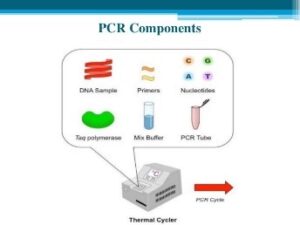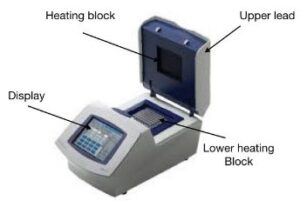
| Properties | Details |
|---|---|
| SFDA Classification | General IVD * IVD: In vitro diagnostic products |
| Purpose of Use | PCR is used for DNA sequencing, cloning, probe generation, DNA and RNA quantification, the study of gene expression patterns, detection of sequence-tagged loci, and many other techniques. |
| Work Location & End-User | Place of work: Medical and biological research laboratories End-User: Medical laboratory scientists and medical laboratory technicians |
| Parts & Accessories | Chemicals: dNTPs, distillation water, PCR reaction solution, Taq DNA polymerase enzyme, primers, and DNA template. Instruments: thermocycling unit, electrospinning unit, and agarose gel. Other: PCR tubes, holders, pipettes, heads.   |
| Operation | Five basic "ingredients" are needed to prepare a polymerase chain reaction. • DNA template to be transcribed • Raw materials, short stretches of DNA that initiate polymerase chain reaction (PCR), designed to adhere to either side of the DNA segment you want to transcribe • DNA nucleotide bases (also known as dNTPs). DNA bases (A, C, G, and T) are the building blocks of DNA and are necessary to build a new strand of DNA • Taq polymerase enzyme to add new DNA bases • Buffer to ensure proper conditions for the reaction. The polymerase chain reaction process involves a heating and cooling process called the thermal cycle which is carried out by a machine. There are three main stages: 1. Denaturing - when a double-stranded DNA template is heated to separate it into two single strands. 2. Annealing - when the temperature is reduced to enable the DNA primers to stick to the DNA template. 3. Expansion - When the temperature rises and the new strand of DNA are formed by the enzyme Taq polymerase. These three phases are repeated 20-40 times, doubling the number of DNA copies each time. |
| Common Problems | • Thermal cycler is not working properly • Low or no amplification • Serialization errors. |
| Manufacturers | • Thermo Fisher • Bio-Rad • Roche • Eppendorf • Biometra |
| Sources | • Saudi Food and Drug Authority • BIO-RAD • nature • PLANTLET • Yourgenome • Merck • Labome |
